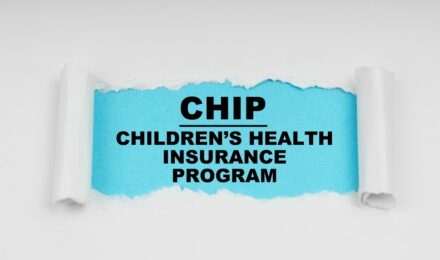Contents
Federal student aid programs in the United States have always been about more than just financing education. They reflect national commitments to equity, opportunity, and social mobility. For decades, grants and loans have opened doors for students who might otherwise have been excluded from higher education. Yet in 2025, sweeping reforms to federal aid raise critical questions about who benefits and who risks being left behind.
By capping Parent PLUS loans, eliminating Grad PLUS, and setting aggregate borrowing limits, Congress has reshaped the financial aid landscape. While the stated goal is to prevent overborrowing and encourage fiscal responsibility, these changes may deepen existing inequalities in access to higher education. The effects will be felt unevenly across income levels, racial and ethnic groups, and institutional types.
The Promise and Limitations of Federal Aid
Federal student aid has long aimed to level the playing field. Pell Grants provide direct assistance to low-income families, while federal loans have offered broad access regardless of credit history. Income-driven repayment plans and forgiveness programs further protect borrowers from financial ruin.
But these programs were designed in a different era. Tuition has skyrocketed, family incomes have stagnated, and student debt has ballooned past $1.7 trillion. As policymakers move to rein in costs, they risk undermining the very equity goals that aid was meant to serve.
Who Benefits from the New Rules
The new aid structure favors certain groups:
- Lowest-income families: Expanded Pell eligibility and the new Student Aid Index (SAI) system mean that the very poorest students may see greater access to grant aid.
- Families at risk of overborrowing: By capping Parent PLUS loans, the reforms protect households from taking on debts that far exceed their ability to repay.
In these respects, the changes may help prevent the worst financial outcomes. Families who might otherwise borrow unsustainably large amounts are shielded from long-term hardship.
Who Gets Left Behind
At the same time, the reforms create significant risks for other groups:
- Middle-income families: Households that earn too much for Pell but not enough to pay out of pocket may struggle to fill the financing gap. Previously, Parent PLUS loans could bridge this difference. Under the new caps, many families may find themselves priced out of certain institutions.
- Graduate and professional students: Without Grad PLUS, students in high-cost programs face steep barriers. Those from affluent families can draw on resources, but students from modest backgrounds may be excluded from medicine, law, or business careers.
- First-generation and underrepresented students: These groups often lack family wealth or financial literacy. Restrictions on borrowing could disproportionately reduce their access, particularly at selective or private institutions.
The cumulative effect is a risk of stratification: those with resources maintain access, while those without face shrinking opportunities.
Racial and Ethnic Disparities
Student debt burdens have long been unequal across racial and ethnic groups. Black students, for example, are more likely to borrow, to borrow larger amounts, and to struggle with repayment. Latino borrowers often face challenges accessing institutional aid and may rely more heavily on federal loans.
By capping borrowing without substantially expanding grants, the new rules may widen these disparities. Families with wealth reserves—disproportionately white households—will adapt more easily. Meanwhile, borrowers of color may face restricted access to higher-cost institutions, perpetuating existing inequities in education and income.
Institutional Inequalities
Not all colleges will be affected equally. Elite universities with large endowments can replace lost federal credit with institutional grants and scholarships. Community colleges, while more affordable, may see greater demand but limited capacity. Regional public universities and less wealthy private institutions, which serve large numbers of Pell recipients and first-generation students, may be hardest hit.
This divergence risks reinforcing a two-tiered system: wealthy institutions continue to thrive and offer opportunities to low-income students, while resource-constrained colleges struggle to maintain access and quality.
Long-Term Consequences
The equity implications extend beyond higher education. Restricting access to graduate and professional programs could affect workforce diversity in critical fields such as medicine, law, and public service. Reducing opportunities for middle-income families could also exacerbate social divides, fueling perceptions that higher education is increasingly only for the wealthy.
At the same time, persistent disparities in student debt could deepen wealth gaps across generations. Borrowers from disadvantaged backgrounds may take on riskier private loans or abandon educational goals altogether, limiting their earning potential and long-term stability.
Policy Alternatives
Advocates argue that aid reform should not end with borrowing caps. To address equity concerns, policymakers could consider:
- Expanding Pell Grants significantly to cover a larger share of tuition and living costs.
- Creating targeted subsidies or service-based scholarships for high-need fields such as medicine and teaching.
- Strengthening state funding for public universities to keep tuition affordable.
- Providing debt relief or grant aid specifically aimed at underrepresented groups to close racial and income-based gaps.
Such measures could offset the risks of borrowing restrictions while preserving fiscal discipline.
What Students and Families Can Do
For students navigating this new environment, proactive planning is essential. Families should research institutional aid policies, compare net prices rather than sticker prices, and explore state and employer-based support. First-generation students may benefit from nonprofit advising programs that help them understand financing strategies beyond federal loans.
Building a diversified plan—combining grants, scholarships, work-study, and limited borrowing—will be increasingly important. While the new rules limit reliance on federal loans, they also encourage families to explore a broader set of resources.
Conclusion
The 2025 reforms to federal student aid mark a pivotal moment in higher education finance. While designed to prevent overborrowing and safeguard families, they risk leaving behind middle-income households, graduate students, and underrepresented groups. The result could be a more stratified system in which wealth plays an even larger role in determining educational opportunity.
Equity was a founding principle of federal student aid. Preserving that principle in the face of new restrictions will require careful policy design, renewed investment in grants, and innovative institutional responses. Without such efforts, the promise of higher education as a pathway to opportunity may narrow for those who need it most.
References
- U.S. Department of Education – Federal Student Aid
- The Institute for College Access & Success – Equity and Student Debt
- Brookings Institution – Racial Disparities in Student Debt
Contents
Federal student aid programs in the United States have always been about more than just financing education. They reflect national commitments to equity, opportunity, and social mobility. For decades, grants and loans have opened doors for students who might otherwise have been excluded from higher education. Yet in 2025, sweeping reforms to federal aid raise critical questions about who benefits and who risks being left behind.
By capping Parent PLUS loans, eliminating Grad PLUS, and setting aggregate borrowing limits, Congress has reshaped the financial aid landscape. While the stated goal is to prevent overborrowing and encourage fiscal responsibility, these changes may deepen existing inequalities in access to higher education. The effects will be felt unevenly across income levels, racial and ethnic groups, and institutional types.
The Promise and Limitations of Federal Aid
Federal student aid has long aimed to level the playing field. Pell Grants provide direct assistance to low-income families, while federal loans have offered broad access regardless of credit history. Income-driven repayment plans and forgiveness programs further protect borrowers from financial ruin.
But these programs were designed in a different era. Tuition has skyrocketed, family incomes have stagnated, and student debt has ballooned past $1.7 trillion. As policymakers move to rein in costs, they risk undermining the very equity goals that aid was meant to serve.
Who Benefits from the New Rules
The new aid structure favors certain groups:
- Lowest-income families: Expanded Pell eligibility and the new Student Aid Index (SAI) system mean that the very poorest students may see greater access to grant aid.
- Families at risk of overborrowing: By capping Parent PLUS loans, the reforms protect households from taking on debts that far exceed their ability to repay.
In these respects, the changes may help prevent the worst financial outcomes. Families who might otherwise borrow unsustainably large amounts are shielded from long-term hardship.
Who Gets Left Behind
At the same time, the reforms create significant risks for other groups:
- Middle-income families: Households that earn too much for Pell but not enough to pay out of pocket may struggle to fill the financing gap. Previously, Parent PLUS loans could bridge this difference. Under the new caps, many families may find themselves priced out of certain institutions.
- Graduate and professional students: Without Grad PLUS, students in high-cost programs face steep barriers. Those from affluent families can draw on resources, but students from modest backgrounds may be excluded from medicine, law, or business careers.
- First-generation and underrepresented students: These groups often lack family wealth or financial literacy. Restrictions on borrowing could disproportionately reduce their access, particularly at selective or private institutions.
The cumulative effect is a risk of stratification: those with resources maintain access, while those without face shrinking opportunities.
Racial and Ethnic Disparities
Student debt burdens have long been unequal across racial and ethnic groups. Black students, for example, are more likely to borrow, to borrow larger amounts, and to struggle with repayment. Latino borrowers often face challenges accessing institutional aid and may rely more heavily on federal loans.
By capping borrowing without substantially expanding grants, the new rules may widen these disparities. Families with wealth reserves—disproportionately white households—will adapt more easily. Meanwhile, borrowers of color may face restricted access to higher-cost institutions, perpetuating existing inequities in education and income.
Institutional Inequalities
Not all colleges will be affected equally. Elite universities with large endowments can replace lost federal credit with institutional grants and scholarships. Community colleges, while more affordable, may see greater demand but limited capacity. Regional public universities and less wealthy private institutions, which serve large numbers of Pell recipients and first-generation students, may be hardest hit.
This divergence risks reinforcing a two-tiered system: wealthy institutions continue to thrive and offer opportunities to low-income students, while resource-constrained colleges struggle to maintain access and quality.
Long-Term Consequences
The equity implications extend beyond higher education. Restricting access to graduate and professional programs could affect workforce diversity in critical fields such as medicine, law, and public service. Reducing opportunities for middle-income families could also exacerbate social divides, fueling perceptions that higher education is increasingly only for the wealthy.
At the same time, persistent disparities in student debt could deepen wealth gaps across generations. Borrowers from disadvantaged backgrounds may take on riskier private loans or abandon educational goals altogether, limiting their earning potential and long-term stability.
Policy Alternatives
Advocates argue that aid reform should not end with borrowing caps. To address equity concerns, policymakers could consider:
- Expanding Pell Grants significantly to cover a larger share of tuition and living costs.
- Creating targeted subsidies or service-based scholarships for high-need fields such as medicine and teaching.
- Strengthening state funding for public universities to keep tuition affordable.
- Providing debt relief or grant aid specifically aimed at underrepresented groups to close racial and income-based gaps.
Such measures could offset the risks of borrowing restrictions while preserving fiscal discipline.
What Students and Families Can Do
For students navigating this new environment, proactive planning is essential. Families should research institutional aid policies, compare net prices rather than sticker prices, and explore state and employer-based support. First-generation students may benefit from nonprofit advising programs that help them understand financing strategies beyond federal loans.
Building a diversified plan—combining grants, scholarships, work-study, and limited borrowing—will be increasingly important. While the new rules limit reliance on federal loans, they also encourage families to explore a broader set of resources.
Conclusion
The 2025 reforms to federal student aid mark a pivotal moment in higher education finance. While designed to prevent overborrowing and safeguard families, they risk leaving behind middle-income households, graduate students, and underrepresented groups. The result could be a more stratified system in which wealth plays an even larger role in determining educational opportunity.
Equity was a founding principle of federal student aid. Preserving that principle in the face of new restrictions will require careful policy design, renewed investment in grants, and innovative institutional responses. Without such efforts, the promise of higher education as a pathway to opportunity may narrow for those who need it most.






